Cebreros Optical Observatory
Cebreros observatory
The CESAR Cebreros Optical Telescope is placed at ESA's Deep Space Tracking Station, located near Cebreros (Ávila)
A sky quality evaluation campaign on CESAR telescope's site is underway to obtain the better estimations of flux sensitivity and photometric stability, and covering weather and observing statistics, local meteorology, atmospheric optical extinction, seeing, optical turbulence profiles, water vapor content and wind vector.
Technical specifications
Mechanics and Optics
The telescope, built by Optical Mechanics Inc.(http://www.opticalmechanics.com), is a classic Cassegrain telescope with a parabolic primary and a hyperbolic secondary mirror. The telescope has a diameter of 50cm and a telescope ratio of F/10., that is the relation between the aperture (diameter) and the focal length.
The equatorial fork-mounted system is built from anodized aluminum. Right ascension and declination axes are driven by high-precision zero-lash drive systems. The relative pointing is less than 0.5 arcsecond and the ?nal tracking resolution is less than 0.3 arcsecond using a closed loop servo actuated system. Non sidereal rate tracking can be used.
The telescope is housed in an automatic motorized dome with a window opening from 0? to 90?. The dome is manufactured by Baader Planetarium.
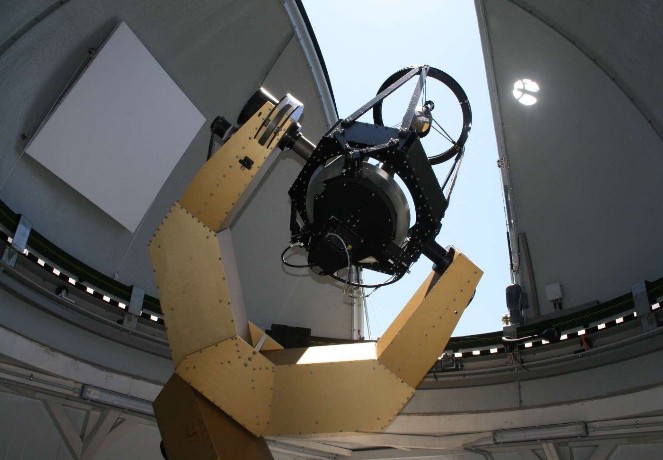
Complete view of the telescope inside the 3.5 m dome. (ESA/CESAR/CAB)
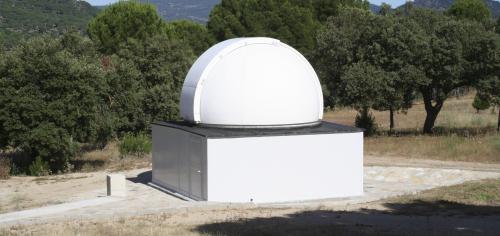
View of the dome for the telescope (ESA/CESAR)
Camera
The telescope is equipped with a 4008×2672 refrigerated CCD Finger Lakes with a pixel size of 9μm that covers a ?eld of 24'×16' with a pixel projection of 0.37"/pixel. This is a cooled monochrome interline array manufactured by Kodak (KAI-11002) optimized for speed readout (12MHz) and a shutter capable of 0.05-second exposures. There is also a ?lter wheel for the telescope with the typical UBVRI Johnson photometry set, nebula ?lters (OIII, Hα,and Hβ), and red, green, and blue ?lters.
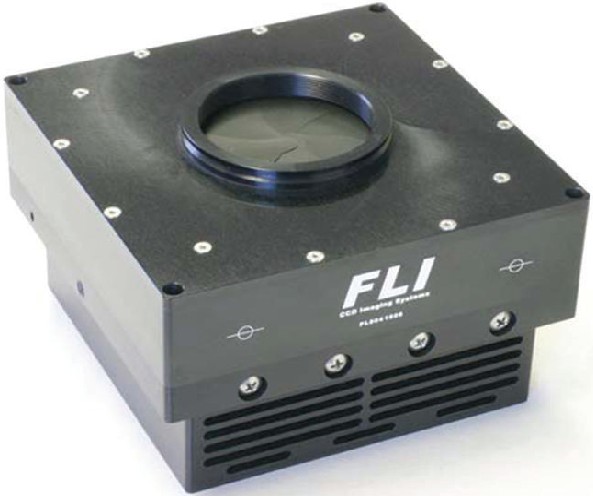
CCD Finger Lakes camera installed on the telescope.
Control System
The observatory is controlled using the LINUX-based Talon software from Optical Mechanics, Inc. This application controls the observatory subsystems: telescope, dome, ?lter wheel, temperature corrected focus, weather station and CCD camera. There is a separate module for data acquisition. Talon is operated by a user friendly Graphical User Interface, as shown in the following picture.
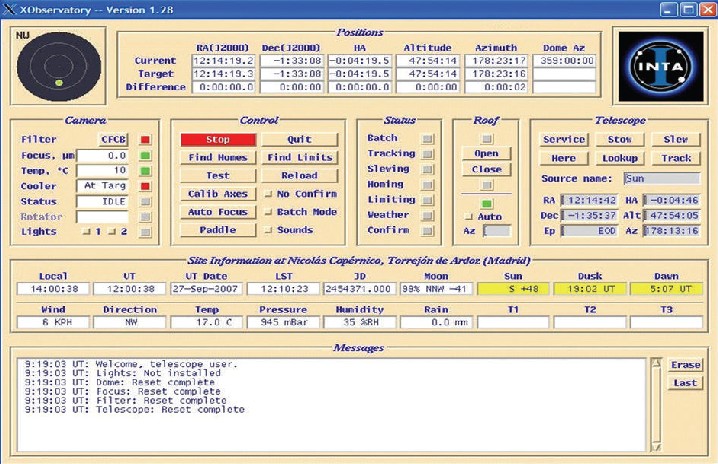
Talon graphical user interface for telescope control. (CAB/CESAR)
The LINUX-based Control System includes two computers, with different objectives. One is focused in the telescope control and the other in the data analysis. There are some other facilities such as UPS, communications, GPS (for time synchronization), weather station, air conditioning to maintain the temperature inside the dome, and remote on/o? system.
To provide complete control over the observatory, some other applications are also available, including sky programs that are used interactively with the telescopes, and web cameras to view the status of the telescope and dome remotely.
Where is located?
The CESAR Cebreros Optical Telescope is placed at ESA's Deep Space Tracking Station, located near Cebreros (Ávila)
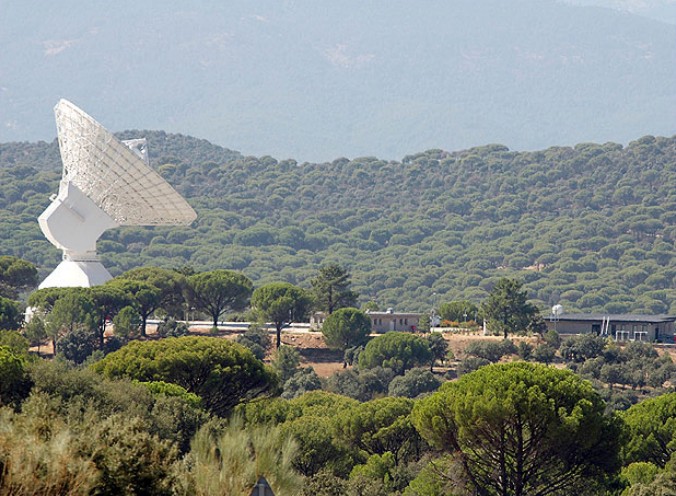
ESA Cebreros Deep Space Tracking Station
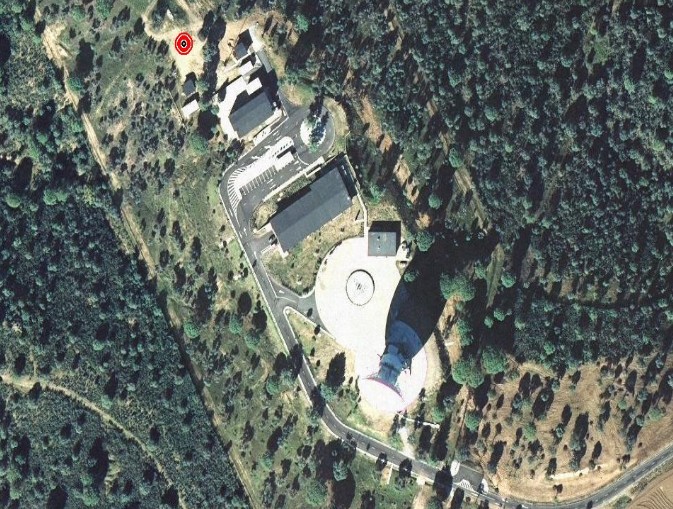
Marked with a red circle, Cebreros Optical Telescope site (Credit: Google Maps)
A sky quality evaluation campaign on CESAR telescope's site is underway to obtain the better estimations of flux sensitivity and photometric stability, and covering weather and observing statistics, local meteorology, atmospheric optical extinction, seeing, optical turbulence profiles, water vapor content and wind vector.
What we can observe?
This is a night telescope, we can observe any planet, galaxy, nebula, star, etc.
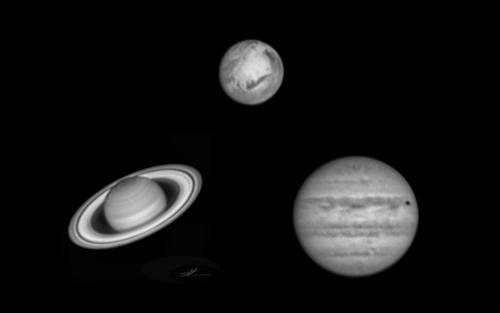
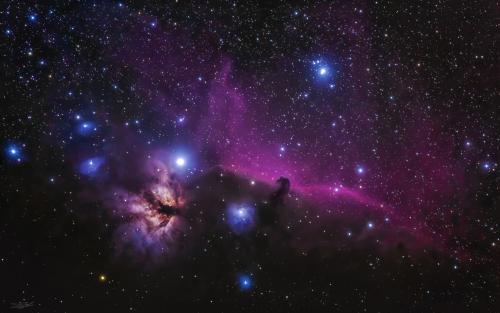
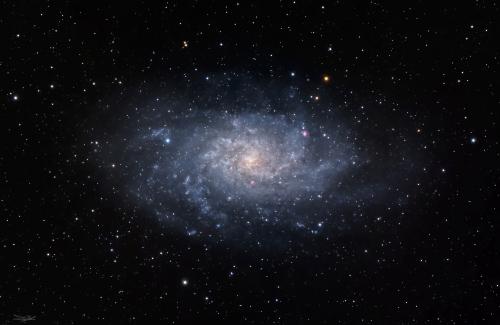
Optical photos (CESAR/ESA/Abel de Burgos)
Access to the observatory
Secondary and also primary schools will be able to access to this telescope. They will need some knowledge about sky observation, science physics, coordinates, CCD camera control (exposition, filters, ...), etc.
-
Optical observations introduction
-
Create a complete observation from school (choose the day, the sources to observe, the CCD camera parameters, etc.)
-
During the night selected the observation will be done.
-
Take the photos next day from the CESAR website and do specific scientific cases with them.
Current status
Waiting hardware and software updates (can be handle with an operator with Talon software knowledges and observing from the observatory).